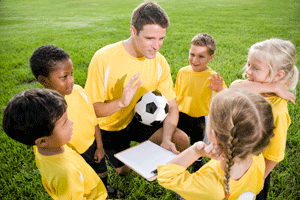 With pediatric health-care providers facing the epidemic of obesity, it is more important than ever to promote athletic activities among young people.
With pediatric health-care providers facing the epidemic of obesity, it is more important than ever to promote athletic activities among young people.
Fortunately, participation in youth sports has grown steadily over the past four decades. Along with that increase comes a trend towards more competitiveness and intensity, resulting in more frequent sports injuries, from both overuse and trauma. Research about the specifics of these injuries is lacking, especially those sustained by young children under age 12.
For a recent research study, a group of doctors at Boston Children's Hospital sought to present reliable descriptive data on sports injuries in children and to compare injuries in young children (5-12 years old) and adolescents (13-17 years old).
The study population included all young patient visits to a sports medicine clinic between the years 2000 and 2009. This meant the study was large, with more than 121,000 patients' data to analyze and compare.
They found that patients 5-12 had significant differences in injuries compared to those 13-17. The younger children sustained injuries more often traumatic in nature, and more commonly in the upper body. Teens, on the other hand, were more likely to be treated for overuse injuries, and more commonly sustained injuries to the chest, hips and pelvis, and spine. A much larger proportion of the older group had soft tissue injuries, compared to the younger group, who was more likely to have fractures.
They also found that among 5- to 12- year-olds, spine injuries were disproportionately female (75.8%). Most of these were back pain from overuse. Also among the youngest children, researchers discovered that more than one-third with spine injuries were diagnosed with spondylolysis, a defect of a vertebra. Spondylolysis affected even more adolescents, more than 40% of the teens with bony spine injuries.
Overall, they also found that of all the young people in the study, surgery was performed in 40% of the injury cases. In fact, operations were the most common treatment, especially knee surgery.
Many of the young patients were very active and played multiple sports, and a large portion had previous overuse injuries. "This suggests that for many young athletes, chronic pain and medical treatments are a way of life, likely bringing unexamined and unintended consequences for children's quality of life now and in the future," the study authors wrote.
If you are the parent of a young athlete with chronic pain, you may be able to help avoid this negative impact on your child's life, simply by scheduling sessions with your family chiropractor. Research supports chiropractic as a safe and effective way to treat children with various chronic pain conditions.
Reference
Stracciolini A, Casciano R, et al. Pediatric sports injuries: an age comparison of children versus adolescents. The American Journal of Sports Medicine 2013. [Epub ahead of print]. doi: 10.1177/0363546513490644.